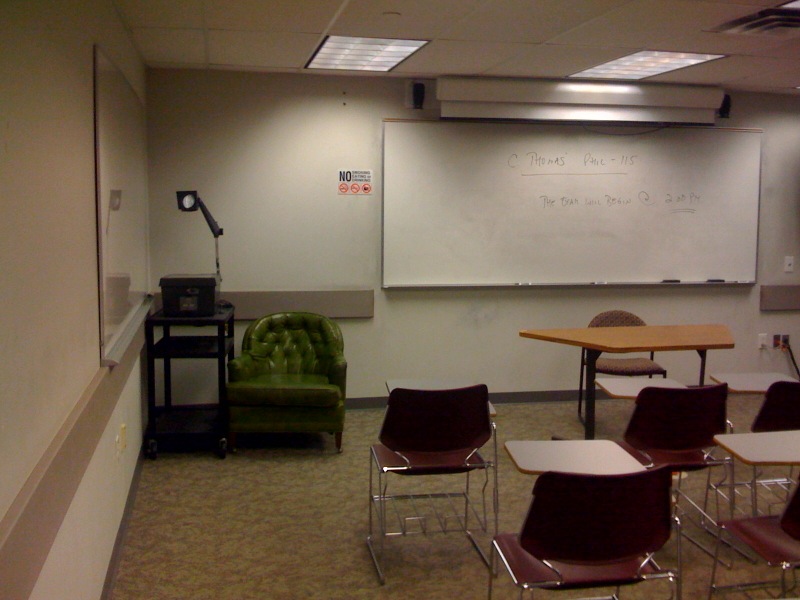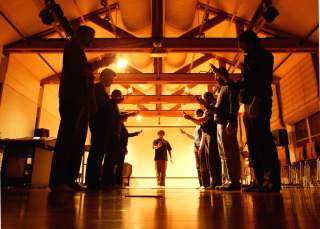Interesting post by English professor Mark Bauerlein. I love blogging - as does Bauerlein, and enjoy texting, IMing, and communicating with video and all of the other 21st Century tools available to us. While I agree that we shouldn't supplant our college composition and research writing courses with these "new media" tools, I think it's important to realize that students must also become proficient in using these tools. It is going to become increasingly important for students to possess a digital media literacy unlike anything we have been required to do. Whether working as a freelance writer, an architect, or a consulting engineer, our future workforce must be digital media savvy. As an architect, imagine competing for jobs with a one-person shop that can generate blog posts, web-traffic, viral video, animation - even a social network of happy customers ready to recommend their work. What ever field our kids choose, it will no longer be just about the quality of their work, but also their digital media and social networking skills.
Brainstorm: The NCTE Reports on Writing and 21st Century Literacies
The National Council of Teachers of English has a series on 21st century literacies, and this week at the CCCC in San Francisco, it will release the third paper in the series entitled ‘Writing between the Lines—and Everywhere Else.’ (Go here for the press release.) The announcement provides the rationale, noting that while students complete writing assignments for school, ‘today, as in the past, much writing also goes on outside of school, and students don’t recognize their self-directed, often online, out-of-school writing as writing that counts as much as the writing they do in school.’
Well, one might say, why in the world should they regard texting, posting, blogging, tweeting, and the rest as counting as much as class assignments? They aren’t graded, they don’t require research, they don’t observe grammar and punctuation and spelling, and they address peers, not adults. They may consider their leisure writing as significant, but in a different way, sensibly recognizing the respective circumstances of academic and leisure writing.
NCTE, however, aims to ennoble leisure writing, to set it on the same level as academic writing. The announcement continues:
‘Today people write as never before—texting, on blogs, with video cameras and cell phones, and, yes, even with traditional pen and paper. People write at home, at work, inside and out of school. To recognize and celebrate this writing, NCTE has announced its National Day on Writing.’
This agenda doesn’t make sense, at least not to me. Why devote a national organization’s energies and resources to a national day celebrating texting? A month or two ago, I’ve been told, someone broke the 30,000 textings-in-one-month barrier. Do these practices need the endorsement of professionals?
It’s strange, but the leveling agenda plus the odd framing of writing continues elsewhere in the series. The previous paper is entitled ‘Writing in the 21st Century,’ by Kathleen Blake Yancey, NCTE past president. (To access the pdf, go to the press release linked to above and click on the second bullet point.)
Here is the second paragraph of the report:
‘Historically, we humans have experienced an impulse to write; we have found the materials to write; we have endured the labor of composition; we have understood that writing offers new possiblity and a unique agenda. Historically, we composers pursued this impulse to write in spite of—in spite of cultures that devalued writing; in spite of prohibitions against it when we were female or a person of color; in spite of the fact that we—if we were 6 or 7 or 8 or even 9—were told we should read but that we weren’t ready to compose. In spite of.’
What to say about this odd opening? The first sentence is a notch above the freshman’s opening ‘Since the beginning of time . . .’ The next sentences cast writing in heated terms of struggle and liberation (‘impulse,’ ‘labor,’ ‘possibility,’ ‘unique agenda’). And then we have anti-writing cultures, racist and sexist prohibitions, and age tyranny. Cap it off with that inane melodramatic phrase ‘In spite of’ (italicized in the original).
Keep in mind that this report proposes a recommendation that teachers bring 21st century writing habits (texting etc.) into the classroom. That is a complex and far-reaching revision, and it merits a steady and scientific approach to, among other things, social and technological trends, the relation of classrooms to society, and the intellectual value of those new literacy habits.
But when a report starts out by overloading the central concept with political overtones and identitarian dramaturgy, one wonders about the agenda. Why has NCTE come down so strongly and so enthusiastically on the side of 21st-century literacies?





